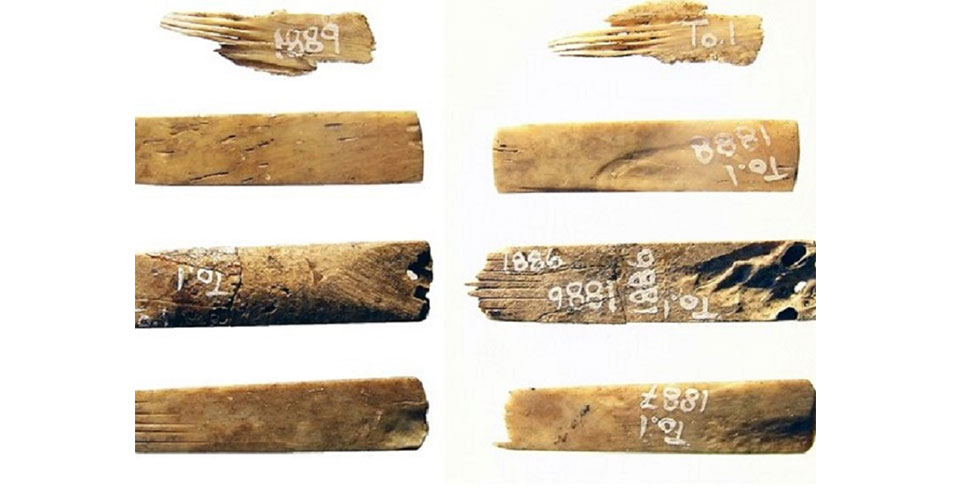
A recent study of four ancient bone tattoo comb tools, found in Tonga in 1963-64, has revealed they are the oldest confirmed in the world, and surprisingly two are made from human bone, say researchers in Australia.
The tattooing combs were radiocarbon dated and determined to be 2,700 years old, confirming that tattooing has been an important cultural practice in Polynesia.
The research was undertaken by Dr Michelle Langley, from Griffith University, and Associate Professor Geoffrey Clark, from The Australian National University, who are the first to meticulously study and date the kit.
The tattoo bone combs were found on Tongatapu at the Pea Public School grounds, near Fanga‘uta lagoon during an excavation by Jens Poulsen in 1963-64. The site also contained ceramics, stone tools, and shell ornaments that were typical of the Lapita culture and Polynesian Plainwares.
The multi-toothed tattoo kit (which included an ink pot when found but is now missing) is believed to be the oldest set discovered in the world.
Dr Langley said discovering early tattooing implements is exceptionally rare.
“These artefacts show that the modern tattooist toolkit – one-piece narrow combs, haft, mallet, carbon pigment, mortar, pestle, and ink-holding vessel – were in use 2700 years ago in West Polynesia.”
“The kit most likely belonged to one tattoo artist. One tool was broken and it looks like it was being repaired, so perhaps the kit was accidentally left behind or was too broken to bother salvaging. Perhaps the tattooist was given a new set,” she said.
When compared to traditional tattooing tools still used in the Pacific today, very little has altered.
“The actual tool itself – the comb shape and the way it’s used – hasn’t changed much, and that’s why this find is so interesting. These ancient tools continue to be used today.”
“So, to find an entire kit is phenomenal. We very rarely find a whole kit of any type of tools in the archaeological record,” she said.
Human bone
The study found that two of the tattoo combs were made from a large seabird and the other two from large mammals which Dr Langley and A/Professor Clark believe are human.
“As there were no other mammals of that size on the island at the time, and human bone is known to be a preferred material for making tattooing combs, we believe they are most likely made from human bone,” said Dr Langley.
“Tattooing combs like these are important for making the complex linear designs famous in Oceania.”
She said the ink found embedded in the bones would have been charcoal or plant-based.
“These combs are more complex than the obsidian stone flakes used in places like New Guinea 3500 years ago – these Oceanic combs are part of a multi-component tool which required more effort to make and maintain.”
Polynesian tattooing
A/Professor Clark said the discovery has also shed further light on the long-running debate about where Polynesian style tattooing first developed.
A previous study suggested that the tattooing traditions of Polynesia started with the formation of an Ancestral Polynesian Society in Tonga and Samoa formed around 2,500 years ago.
“This discovery pushes back the date of Polynesian tattooing right back to the beginnings of Polynesian cultures around 2,700 years ago,” said A/Professor Clark.
“These bone tattoo combs are a very specific type of technology found across Oceania.”
“The question has always been, were these tools introduced to the Pacific through migration, or were they developed in Polynesia where we know tattooing has a very prominent role in society and spread from there.”
A variety of tattooing combs were found to differ throughout Polynesia with the single and multiple bone combs attached to a plate of turtle shell only known from Tonga and Samoa.
The article, Ancient tattooing in Polynesia, has been published in the Journal of Island & Coastal Archaeology (JICA).




